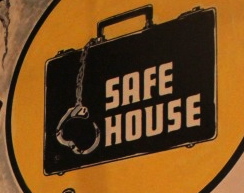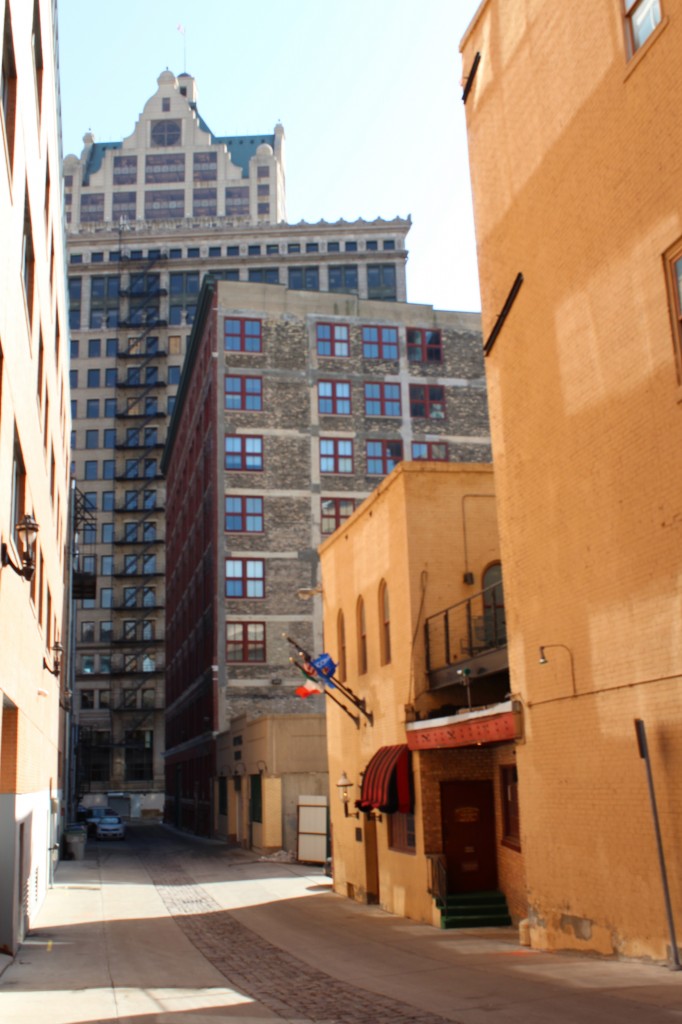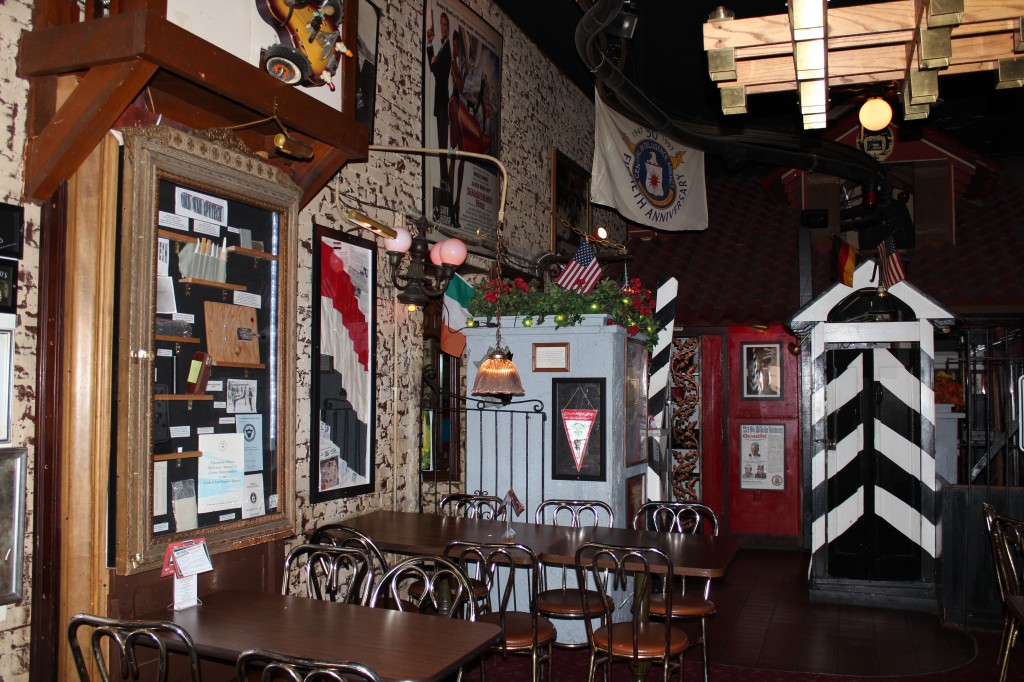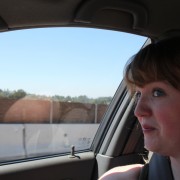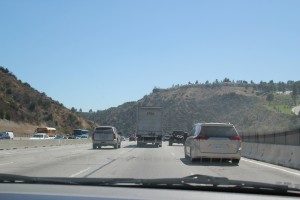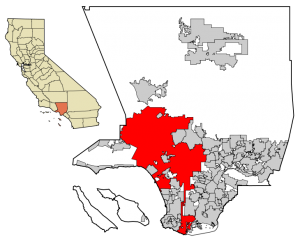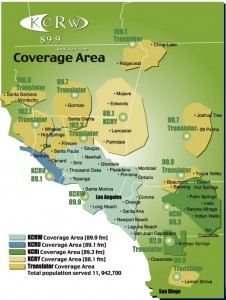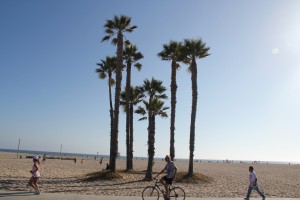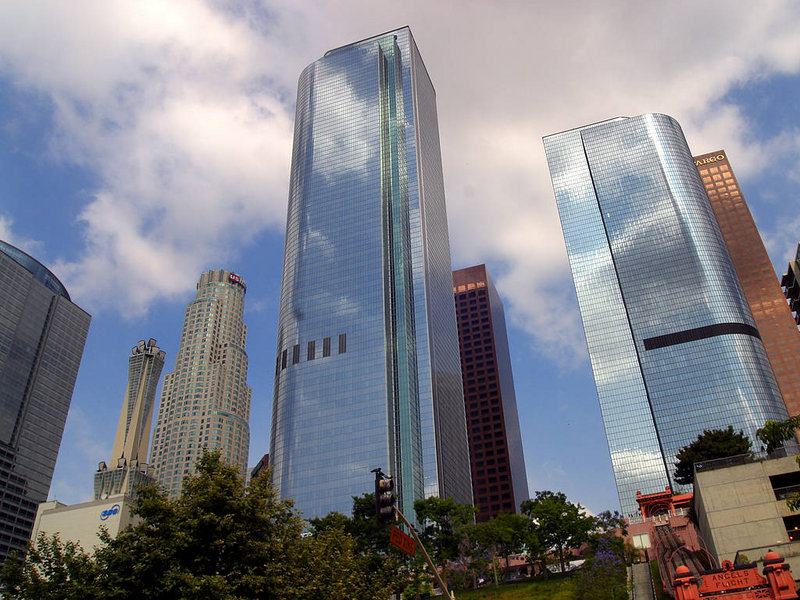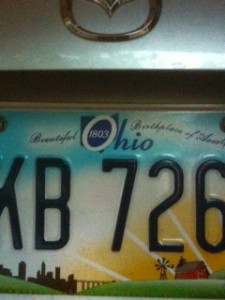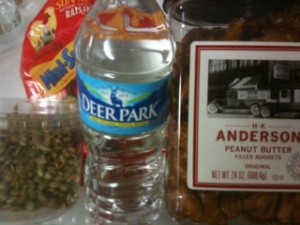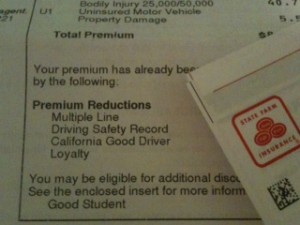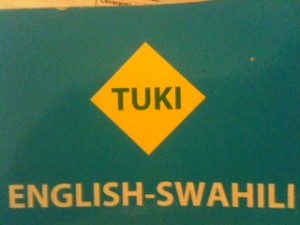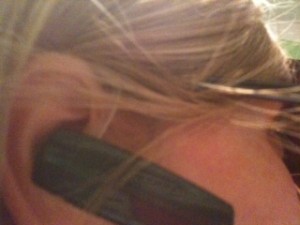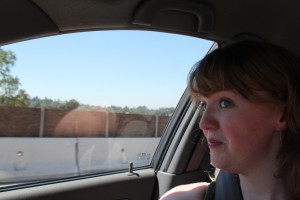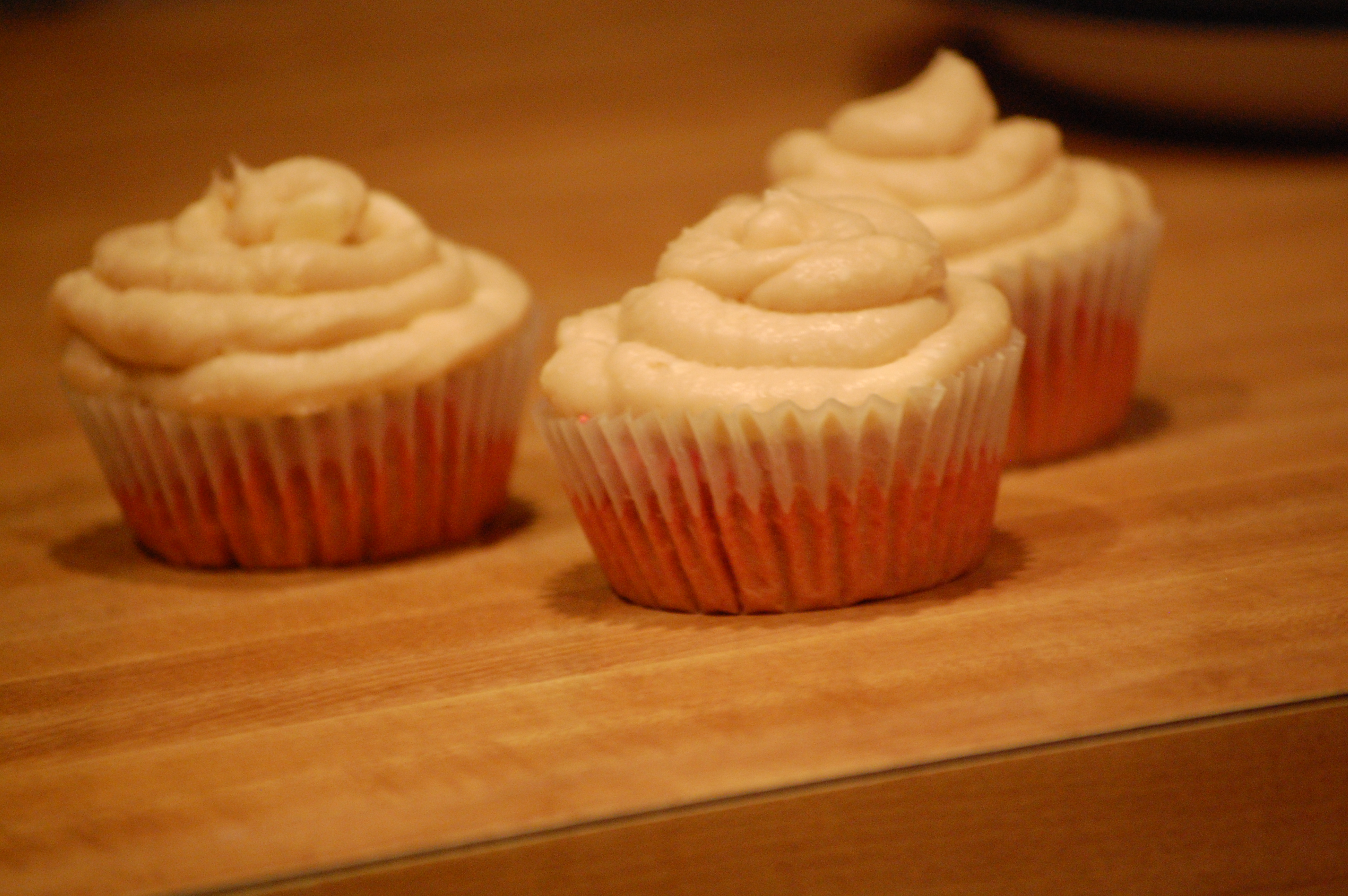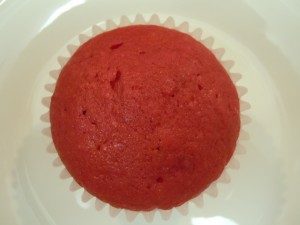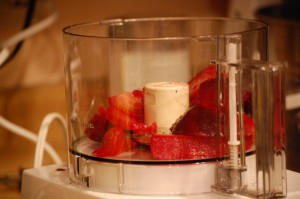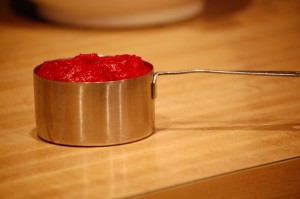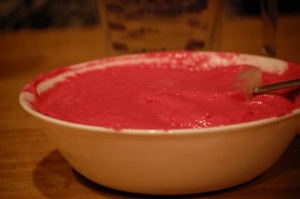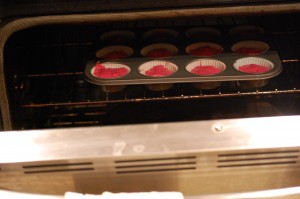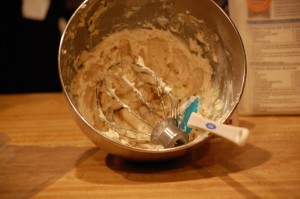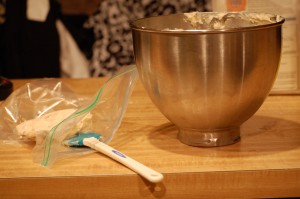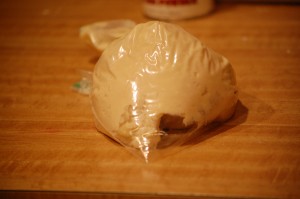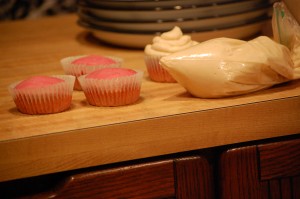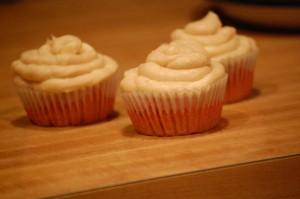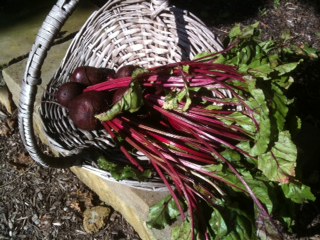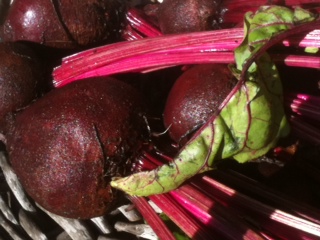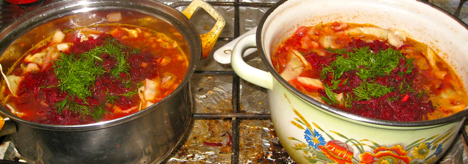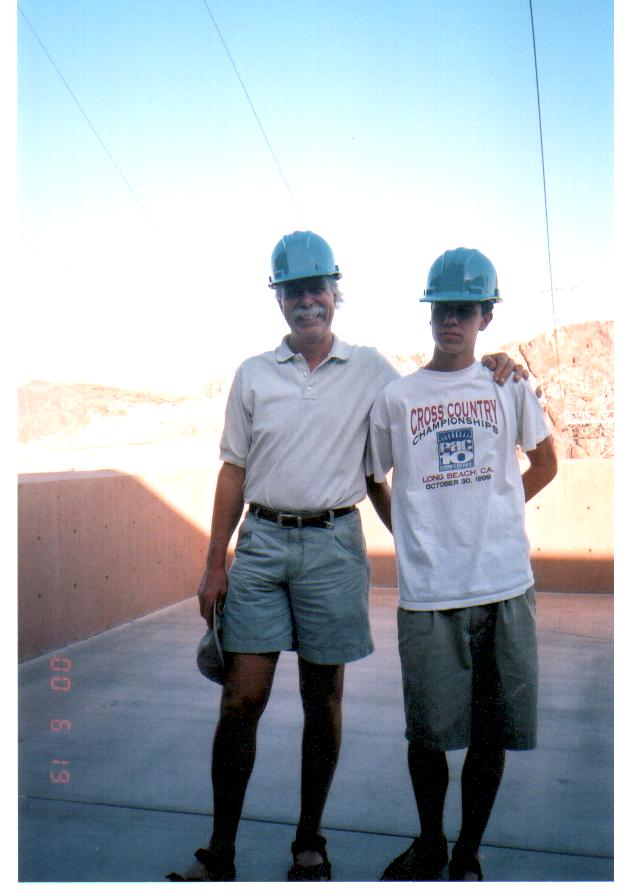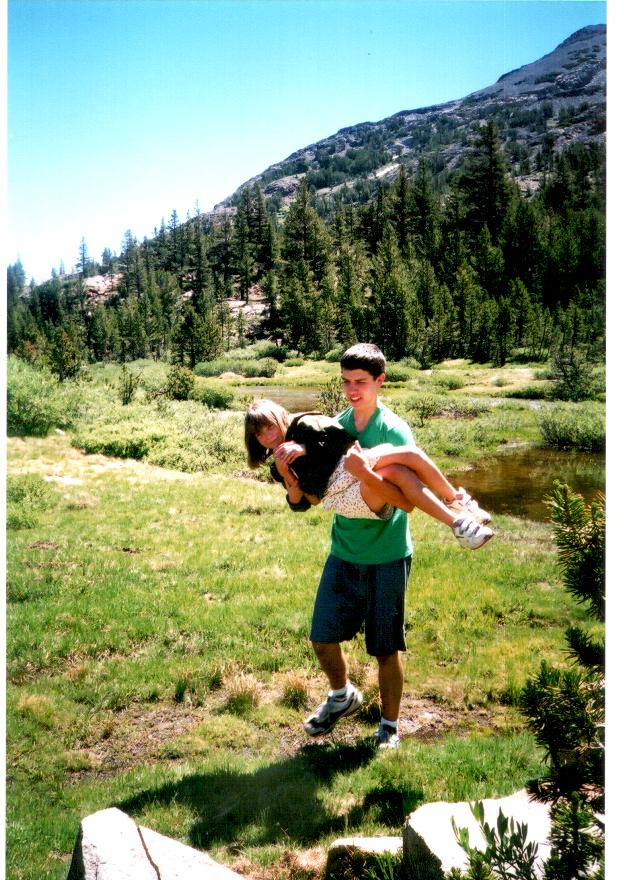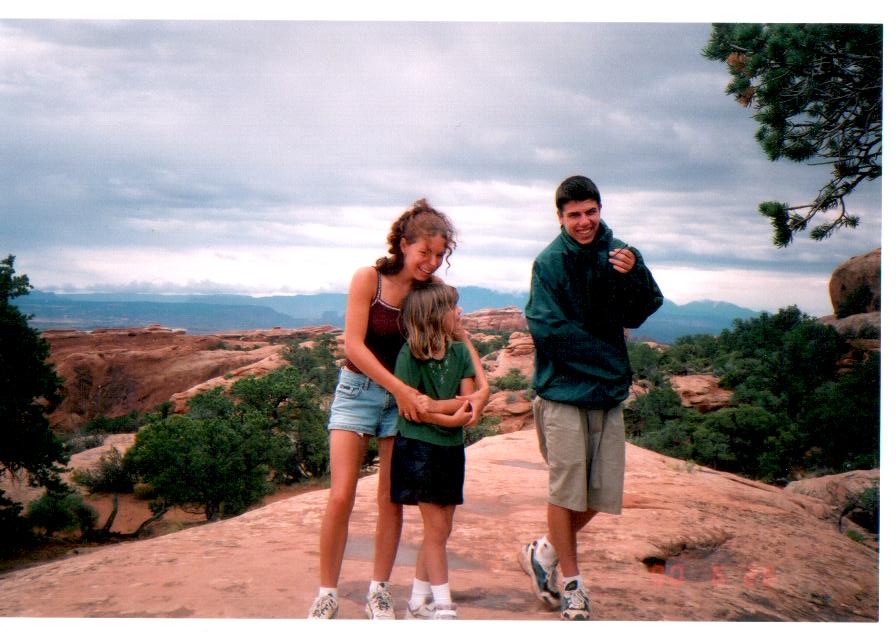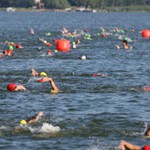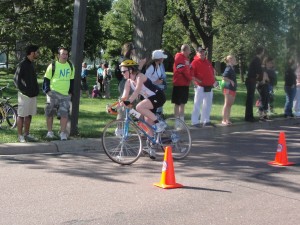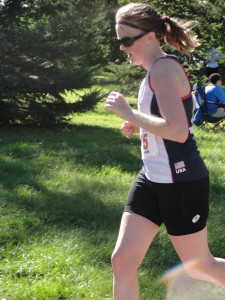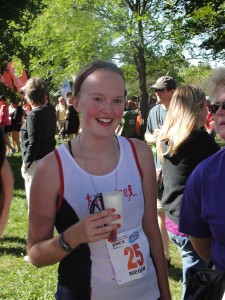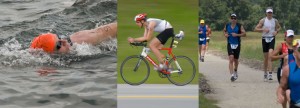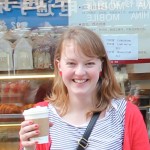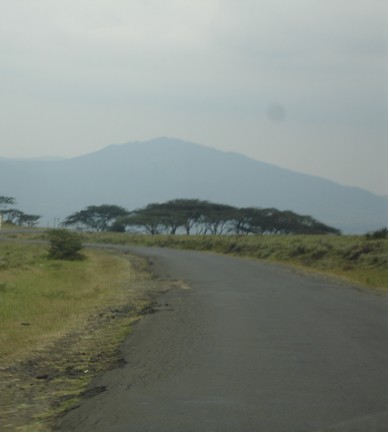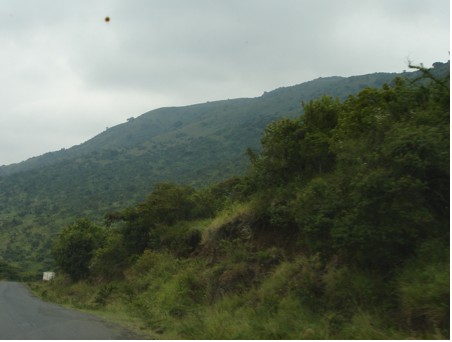“I’m Looking for a Safe House”
For most Wisconsin residents, the city of Milwaukee offers five main attractions: beer, brats, baseball, basketball, and a beautiful lake. From touring the Miller Brewery Visitor Center and witnessing the historic origins of the “Beer City of the World,” to testing your luck at the Potawatomi Bingo Casino, to even experiencing the adventures within the Harley Davidson Museum, a day in the prosperous city can never be uneventful.
However, for others, Milwaukee serves as a secret refuge for spies engaging in covert operations.
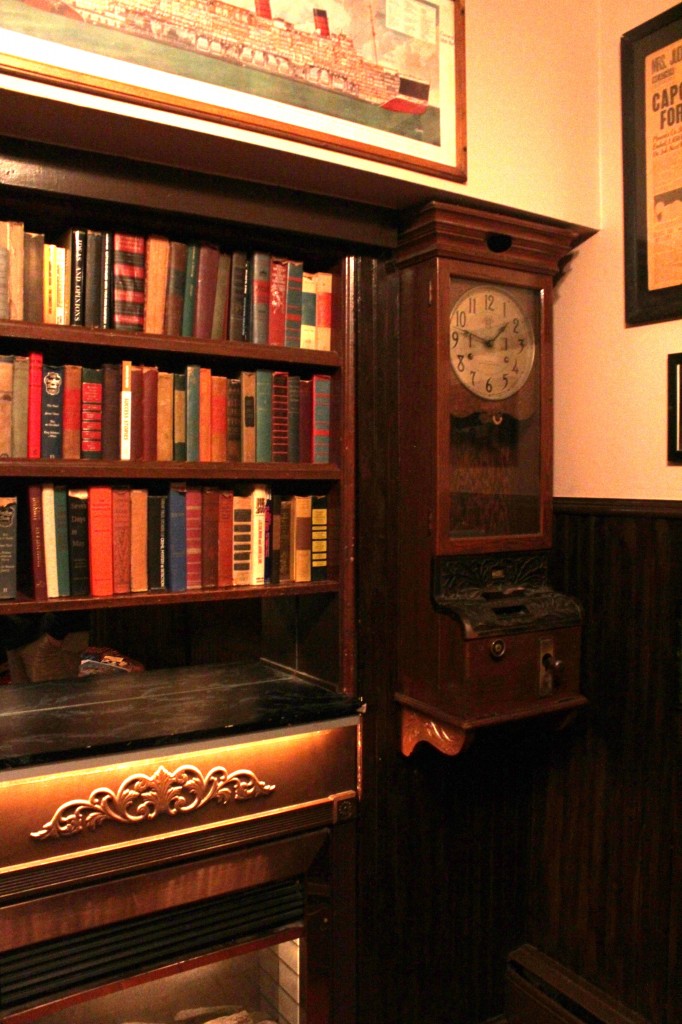 While the shadows of Milwaukee’s City Hall may fall on what appears to be a nondescript alleyway, an observant eye will discover a sign that reads International Exports, Ltd., 779 Front Street. Many pass by this sign without any regard. Some, however, choose to enter the hidden door adjacent to the sign and are greeted by a woman known as Miss Moneypenny. She sits at an antique desk in a dimly lit waiting room, and startled, asks you for a password of entry.
While the shadows of Milwaukee’s City Hall may fall on what appears to be a nondescript alleyway, an observant eye will discover a sign that reads International Exports, Ltd., 779 Front Street. Many pass by this sign without any regard. Some, however, choose to enter the hidden door adjacent to the sign and are greeted by a woman known as Miss Moneypenny. She sits at an antique desk in a dimly lit waiting room, and startled, asks you for a password of entry.
Without knowing the password, you may start to panic. What is this place? Am I upsetting her? Miss Moneypenny will proceed to ask you to perform different “tricks” for access to a secret world in return. However, by simply whispering the words “I’m Looking for a Safe House” Miss Moneypenny will hesitate no longer. With the pull of a hidden lever under her desk, a bookcase suddenly moves aside to reveal a mysterious hallway. You too should not hesitate, and instead proceed before Miss Moneypenny changes her mind and closes the bookcase once again.
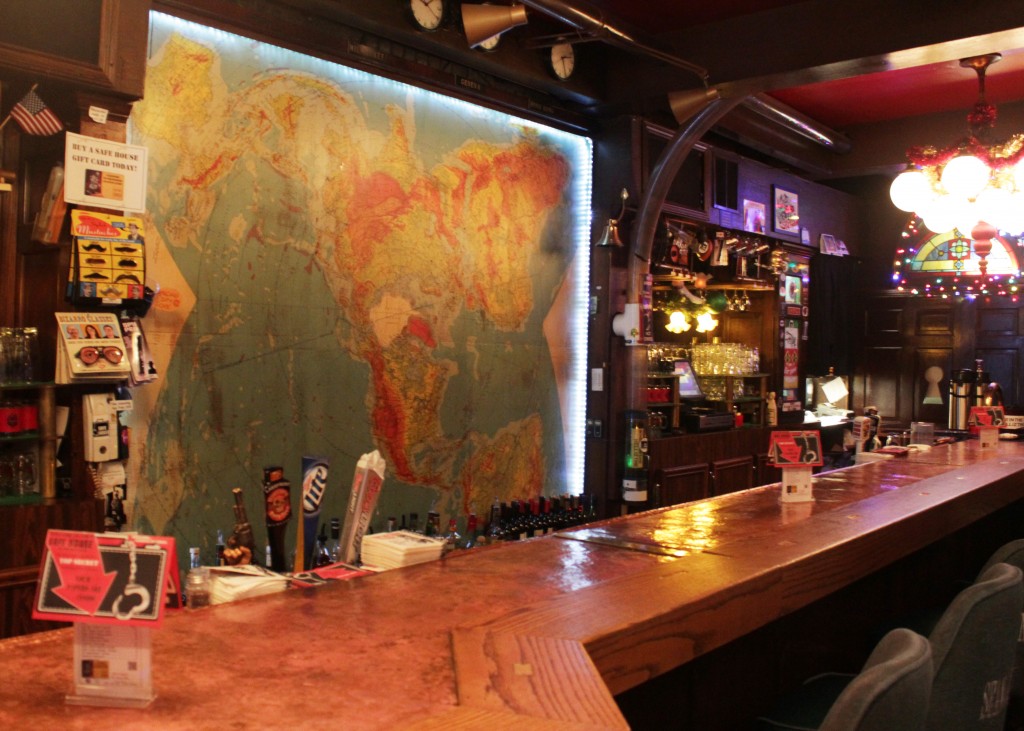 Upon entering through the bookcase, the obscure hallway seems to continue forever. The lighting barely reveals an atmosphere, and a subtle musty odor lingers in the air. Black and white photographs and framed documents hang from the walls around you, and after looking closer, you start to discover the secrecy of your surroundings. You may try to retreat through the bookcase, but after finding out that it exists no longer, your only choice is to continue to venture forward.
Upon entering through the bookcase, the obscure hallway seems to continue forever. The lighting barely reveals an atmosphere, and a subtle musty odor lingers in the air. Black and white photographs and framed documents hang from the walls around you, and after looking closer, you start to discover the secrecy of your surroundings. You may try to retreat through the bookcase, but after finding out that it exists no longer, your only choice is to continue to venture forward.
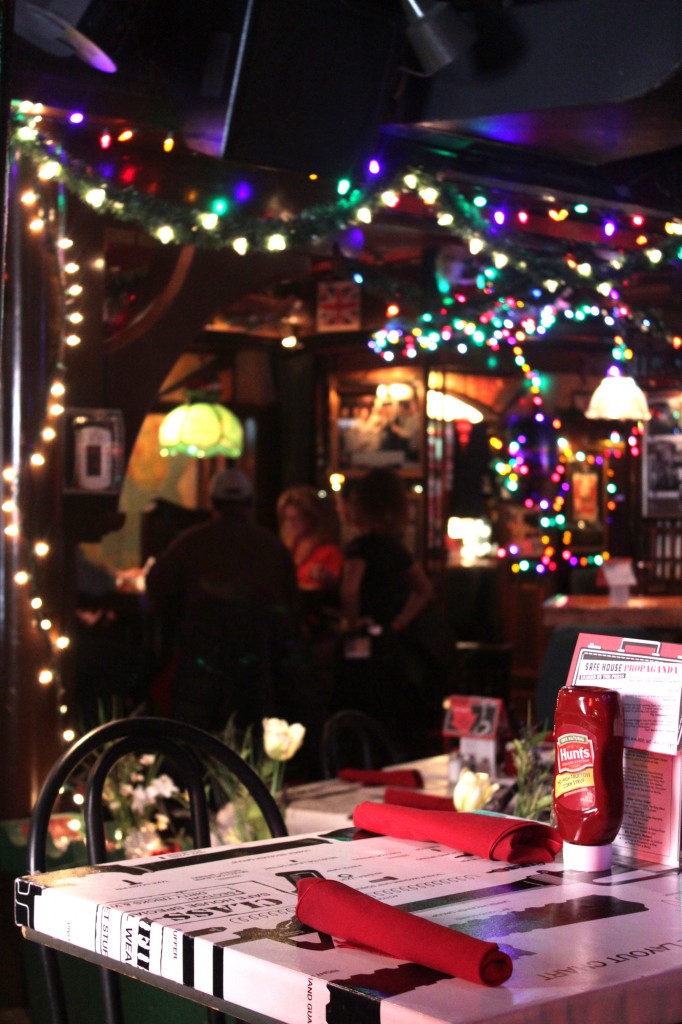 You eventually reach yet another entry way; however, this time you step foot into what appears to be a restaurant. A bar stretches across an area to your left and features a large map with specific locations repeatedly circled in red. Hidden rooms are to your right and each hold tables, seating, and mysterious wall accents. You are greeted by a hostess who refers to you as a spy and asks if you would like to be seated. You say yes and ask her where exactly you are. She hesitates but eventually responds “The Safe House.”
You eventually reach yet another entry way; however, this time you step foot into what appears to be a restaurant. A bar stretches across an area to your left and features a large map with specific locations repeatedly circled in red. Hidden rooms are to your right and each hold tables, seating, and mysterious wall accents. You are greeted by a hostess who refers to you as a spy and asks if you would like to be seated. You say yes and ask her where exactly you are. She hesitates but eventually responds “The Safe House.”
Upon being seated, you are confronted by a waitress who hands you a menu and brings you water in a red glass with a black key hole on one side. She also hands you a folded piece of paper that is stamped with the word “CONFIDENTIAL.” You anxiously unfold the document and reveal a Spy Mission that is to be completed before leaving the Safe House. Without further delay, you read the ten tasks that make up the mission.
The first task is to find a room with a green ceiling that features a “cracked code.” You begin to wander around the restaurant until you come across such a room. After searching the surroundings, you eventually discover a framed two inch card surrounded by photographs of James Bond 007. The card is signed by a former spy and reveals a code in which you use to complete the mission. You jot down the code, and continue up some wooden stairs to explore another bar and secret area of the restaurant.
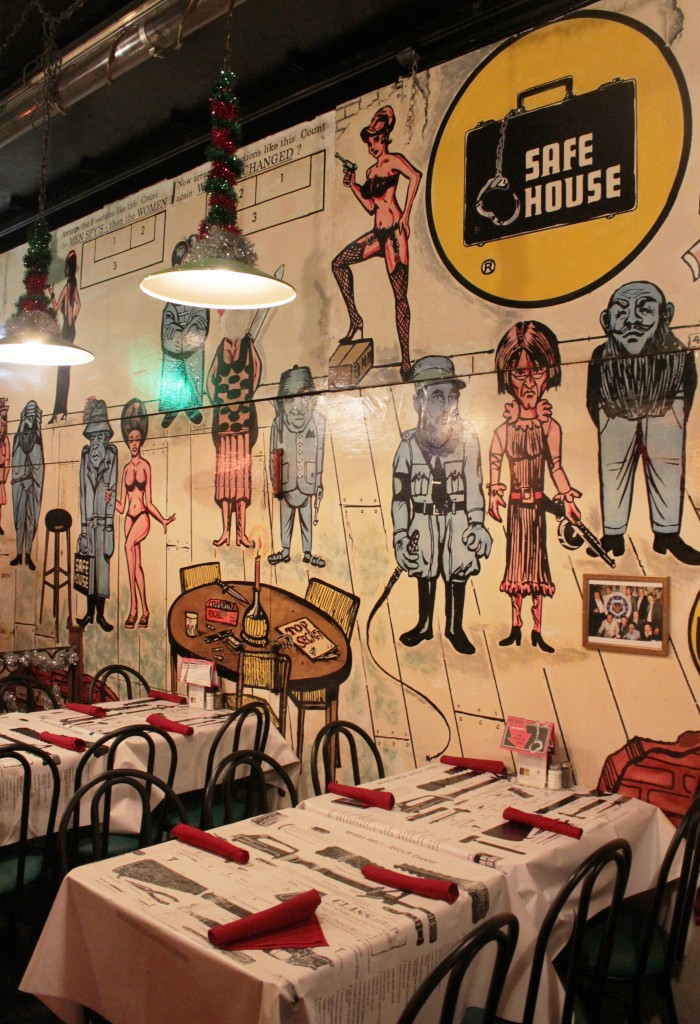 The second task is a little more risqué. It involves a woman having to enter a specific ladies’ room located within the restaurant and discovering a poster of Burt Reynolds. When the woman finds the poster, a siren sounds for the whole restaurant to hear, and everyone knows what that woman just witnessed She then has to walk out of the ladies’ room and is usually greeted by laughter.
The second task is a little more risqué. It involves a woman having to enter a specific ladies’ room located within the restaurant and discovering a poster of Burt Reynolds. When the woman finds the poster, a siren sounds for the whole restaurant to hear, and everyone knows what that woman just witnessed She then has to walk out of the ladies’ room and is usually greeted by laughter.
Around the corner from the ladies’ room lies the destination that contains the third task of the Spy Mission. A long wall stretches across the area that features various cartoon illustrated individuals. A third bar is present in the room and seating is available alongside the wall for an extra special dining experience. The challenge asks you to discover a button that turns the current stationary wall into action. Upon finding the button and pushing it once, the wall suddenly breaks up into puzzle pieces. The shapes then begin to move over and past one another until the bodies and heads of the illustrated characters are swapped. Once the wall is finished moving, a woman’s body often times now has a man’s head.
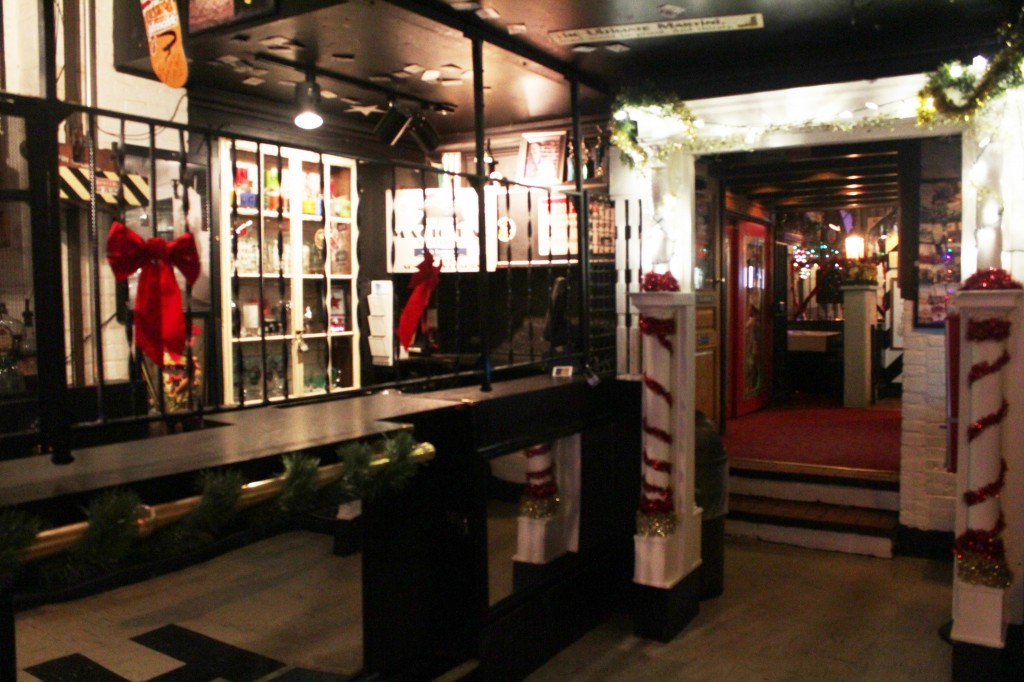 After completing three tasks of your Spy Mission, you venture back to your table and order a Spy Burger off of the menu. The Safe House features creatively titled lunch and dinner items ranging from burgers, salads, sandwiches, and soups. The restaurant has won multiple awards for the peculiar atmosphere and decorations as well as for the delicious food. Four bars exist throughout the restaurant as to provide the spies with multiple secluded meeting areas. The Safe House even features an upstairs room that is available for private spy conversations.
After completing three tasks of your Spy Mission, you venture back to your table and order a Spy Burger off of the menu. The Safe House features creatively titled lunch and dinner items ranging from burgers, salads, sandwiches, and soups. The restaurant has won multiple awards for the peculiar atmosphere and decorations as well as for the delicious food. Four bars exist throughout the restaurant as to provide the spies with multiple secluded meeting areas. The Safe House even features an upstairs room that is available for private spy conversations.
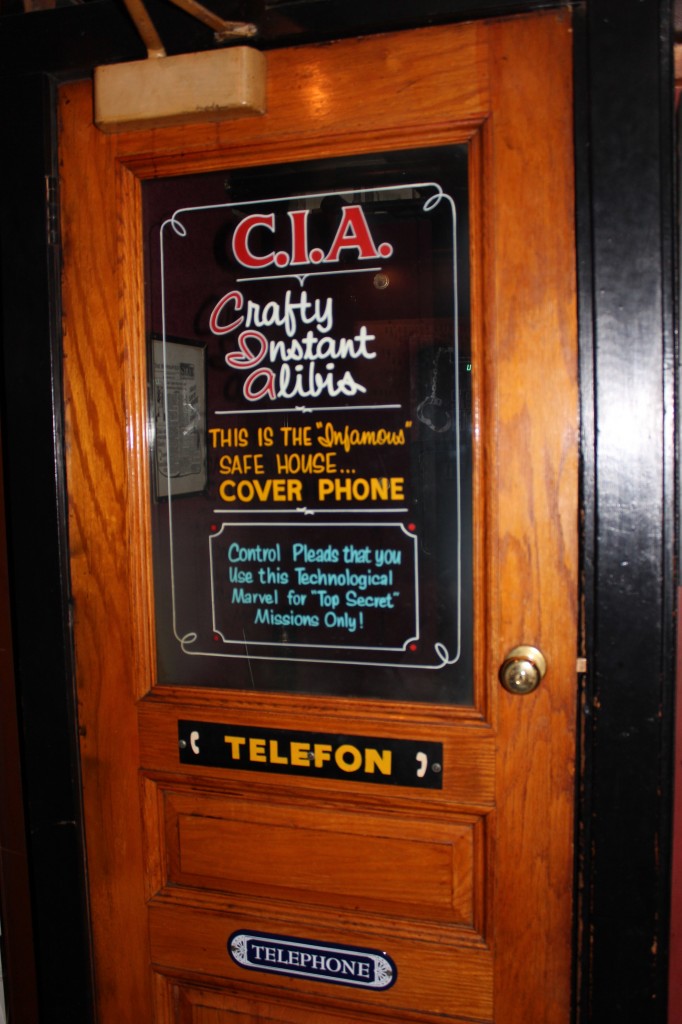 While many more tasks await you, I will not reveal any other information about the Safe House other than the route of exit. In order to successfully leave the restaurant, you must exit through a way that you did not enter. Upon wandering throughout the restaurant in an effort to discover this secret route, you will come across a CIA telephone booth in which you should insert a quarter and follow the directions prompted to you. This will then allow you to leave through a mysterious alleyway, but only after being taken into the Interrogation Room.
While many more tasks await you, I will not reveal any other information about the Safe House other than the route of exit. In order to successfully leave the restaurant, you must exit through a way that you did not enter. Upon wandering throughout the restaurant in an effort to discover this secret route, you will come across a CIA telephone booth in which you should insert a quarter and follow the directions prompted to you. This will then allow you to leave through a mysterious alleyway, but only after being taken into the Interrogation Room.
To complete the entire Spy Mission and discover all that the secret refuge has to offer, visit the Safe House yourself at 779 North Front Street!
~Kerry~
To view my complete album from my trip to Milwaukee, visit EY’s Facebook page!

